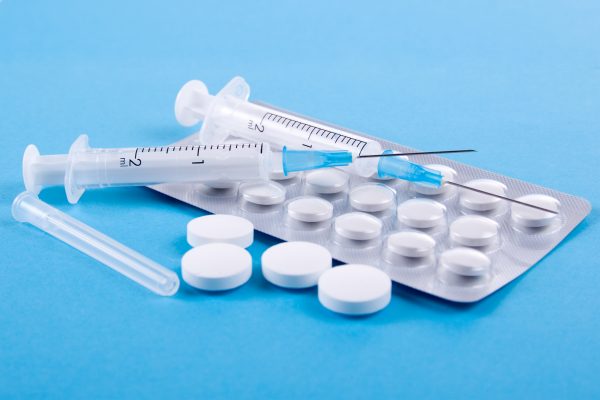
It’s no secret that opioids have reshaped the landscape of our nation: Our healthcare system, our policymakers, and our criminal justice system are all grappling with the impact opioids have had on our national story.
As a family medicine doctor who has specialized in the treatment of opioid use disorder (OUD) for 10 years, I’ve seen clearly that broad, low-barrier access to effective care is the solution to this crisis. In the wake of pandemic-era treatment shifts, we now know that telehealth has been a highly effective setting for delivering OUD care. We also know that it can bridge the access gaps that have plagued clinicians and patients in this space for decades.

With the Rise of AI, What IP Disputes in Healthcare Are Likely to Emerge?
Munck Wilson Mandala Partner Greg Howison shared his perspective on some of the legal ramifications around AI, IP, connected devices and the data they generate, in response to emailed questions.
Bipartisan legislation rooted in proven OUD treatment research like the recently reintroduced TREATS Act, a bill that could catalyze the expansion of telehealth-based OUD treatment, is a step in the right direction. The TREATS Act makes Covid-era access to telehealth permanent, which increases access to highly effective OUD treatment programs at lower-costs. The aim of the TREATS Act is to remove regulatory barriers to telehealth-based medication for OUD (MOUD) treatment programs that restrict access to care for the most vulnerable patients in our population. The TREATS Act is common-sense legislation that will help the decriminalization of OUD by making it easier to access treatment.
In any discussion of our nation’s most at-risk and underserved patients with OUD, it’s critical that we not overlook people in custody. Jail and prison health services rarely offer effective OUD care and have struggled to implement programs to do so. If we’re able to extend the care to this patient population, facilitated by the TREATS Act, then we can augment incarcerated patient services with teleMOUD to ensure consistent access to care especially through critical transitions back into community living.
Expanding access to an often-forgotten patient population
Roughly 20% of adults in custody are struggling with OUD. It’s no wonder, given that untreated OUD often deteriorates to illicit opioid use and risk for incarceration. It’s a population that’s easily ignored due to separation from society at large, yet this separation can also present an opportunity to address the treatable condition that often underlies their incarceration. Failure to do so essentially guarantees recidivism, as we know relapse rates following the end of a period of forced abstinence, such as incarceration, are extremely high.
Right now, the criminal justice system acts like a rotating door for people with OUD: Enter custody. Serve your time. Get released with no understanding of or intervention for your addiction. Re-offend. Repeat. It’s a vicious cycle that costs our nation in monetary resources and human lives. We can break that cycle through treatment access.
Treatment during incarceration and beyond release offers hope
People in custody with OUD historically haven’t had access to treatment options, and in uncommon instances where they have, that treatment never has been continued seamlessly as they transition from custody back to their lives. People in custody have a 12.7 times higher risk of death in the 2 weeks following their release—and the leading cause of death for those released from custody is opioid-related overdose. For many people who find themselves released from custody and exposed again to opioids with an untreated use disorder, the notion of navigating an unfamiliar insurance landscape and quickly establishing a treatment relationship with a hard-to-find addiction medicine provider is understandably daunting if not impossible. Relapse tends to ensue, then recidivism.
There’s a better path forward. Expanding access to telehealth-based treatment programs that include medications for OUD, like buprenorphine or Sublocade, to patients as they leave custody can upend this cycle of incarceration through seamlessly following patients wherever they go next—from leaving custody through time in reentry centers to resuming life in their communities. TeleMOUD care can be accessed in all these settings, unlike traditional facility-based care which is disrupted and must be reestablished with each move. TeleMOUD care models ultimately enable more treatment continuity to help patients access this treatment – wherever they are – and remain in opioid recovery.
Virtual care can upend current challenges
This isn’t a brand new idea. Since regulatory waivers began permitting the practice in 2020, my practice has worked with hundreds of patients transitioning back into society post-incarceration and seen tremendous success in preserving continuity.
Without further regulatory action though, these waivers expire next year which would put incarcerated patients and jail and prison systems back in the impossible position of trying to preserve seamless, uninterrupted treatment for a dangerous condition through a highly disruptive reentry process. Only telemedicine can do that universally, regardless of where a person goes to return to work or family post-release.
The TREATS Act creates a legal pathway for this care to continue. We already have the solution, it’s a tremendously hopeful one that just requires health systems and regulators to collaborate to break down barriers to protect and scale proven teleMOUD care models. This is one approach that, with certainty, will finally make a dent in the ever-worsening opioid epidemic as long as we continue to build on our progress to date.
Photo: Stuart Ritchie, Getty Images
Brian Clear, MD, FASAM, is a double boarded Family and Addiction Medicine Physician who has dedicated his career to the care of patients struggling with problematic opioid use. As Chief Medical Officer, he has designed and scaled Bicycle Health's telemedicine platform and continues to publish research finds that support the success of this model, ultimately working to contribute to destigmatization and improved provider understanding of effective accessible OUD care.
Dr. Clear earned his Doctor of Medicine (MD) from American University of the Caribbean School of Medicine and completed his residency at the University of Kentucky Family & Community Medicine Residency Program with a focus on global health. Before Bicycle Health, Brian served as Medical Director for the integrated treatment of opioid use disorder and primary care services with BAART Programs in San Francisco.














